Style
This 1980s Drag Zine Helped Launch the Careers of Queens Like RuPaul. Now It’s Celebrating Its 35th Anniversary With an Exhibition—and a New Issue
Linda Simpson's revolutionary zine returns in time for Pride Month.
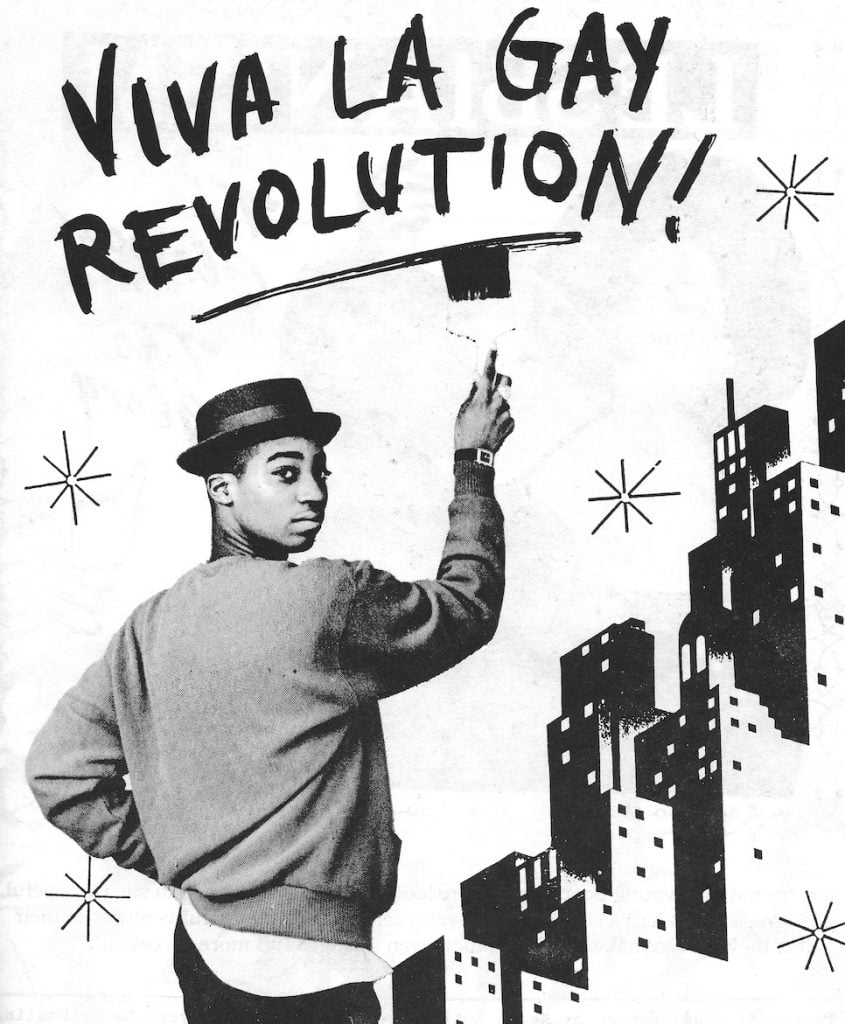
Linda Simpson's revolutionary zine returns in time for Pride Month.

William Van Meter

My Comrade was a drag scene zine that documented the East Village demimonde from 1987 to 1994. In its sporadic 13 issues, drag royalty rubbed shoulders with go-go boys, nightclub denizens, art stars, and assorted riffraff and glamour-pusses.
In its initial run, the zine was a fun reflection of the city’s creative drag epicenter and a fabulous retaliation to the AIDS crisis. The intervening years have made the mag’s influence clear. My Comrade is celebrating its 35th anniversary with an exhibition, which opened this weekend at Howl! Arts. It’s accompanied by a new issue (available at the gallery), and a coffee-table compendium is due out in early July.
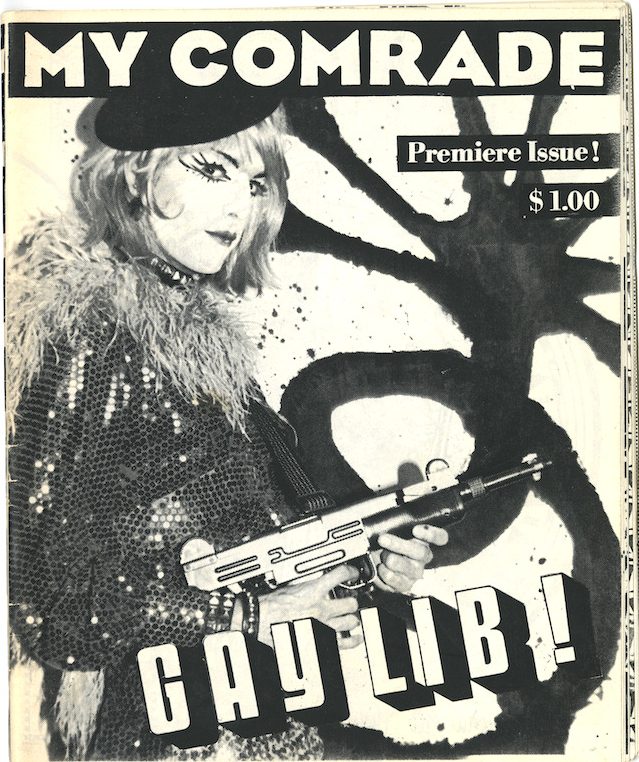
Tabboo! channels Patty Hearst for the 1987 My Comrade debut. Courtesy of Linda Simpson.
Oftentimes, one doesn’t realize being in the center of the zeitgeist. But, as the zine’s founder, editor, and drag queen nonpareil Linda Simpson tells it, “Oh, I knew it. Everything was so intense then.” She continued, “I brainstormed a lot about what I wanted the magazine to be. I originally wanted it to be a F.U., punk-rock type of thing. But a little voice told me, let’s go a more joyful route. Gay love, gay power, and gay unity were the themes. It was more about camaraderie than anything else.”
The zine’s aesthetic and the fashions within have come back around and look modern. Articles included “An Enlightened Guide to Subway Toilet Sex” and “I Enjoy Being a Girl on 42nd Street.” Each issue came with a section devoted to its sister magazine—called, of course, Sister!—for “lesbians who like women.” It’s a testament to the caliber of that era’s downtown culture that its guest stars and contributors, including RuPaul, Tabboo!, Jack Pierson, and David Armstrong, are still so relevant today.
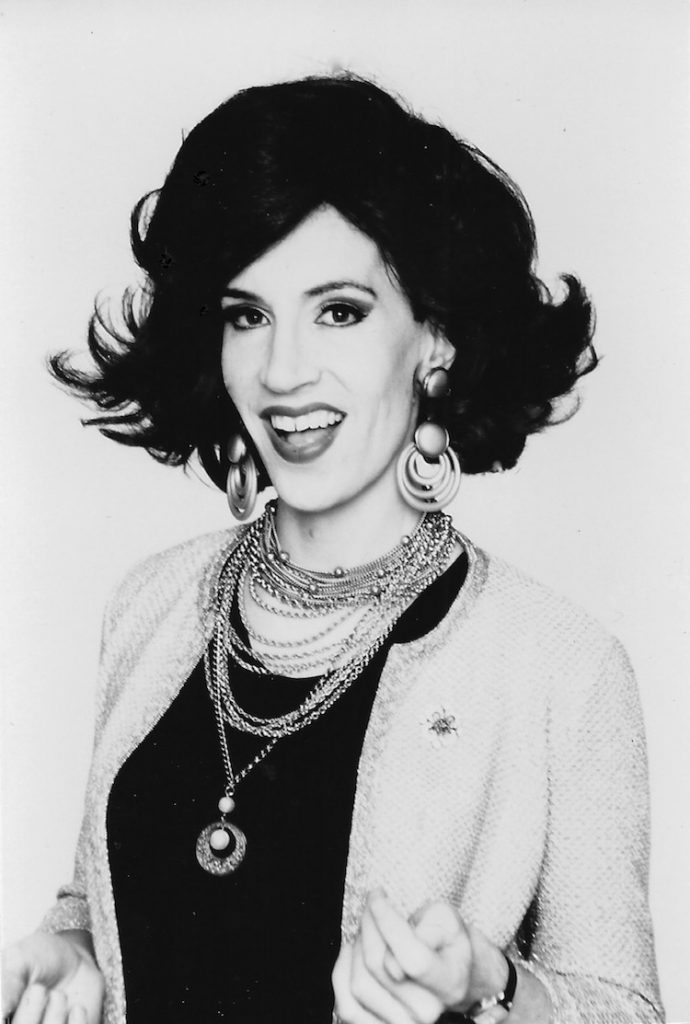
Linda Simpson in her My Comrade days. Courtesy of Linda Simpson.
“We had women, men and trans people before we even started using the word transgender,” Linda says of My Comrade‘s subjects. “It was very inclusive, but I think it’s reflective of a time where we didn’t need to, like, pound that over everyone’s head. It was naturalistic.”
Linda (whose mild-mannered alter ego is Les Simpson) always stood out amongst her contemporaries in the Pyramid Club drag scene and at decadent Club Kid haunts like Tunnel and Limelight. While many channeled transgression, Linda seemed to explore normativity and the middle American mindset with a decidedly wry wit. Her name suits her perfectly.
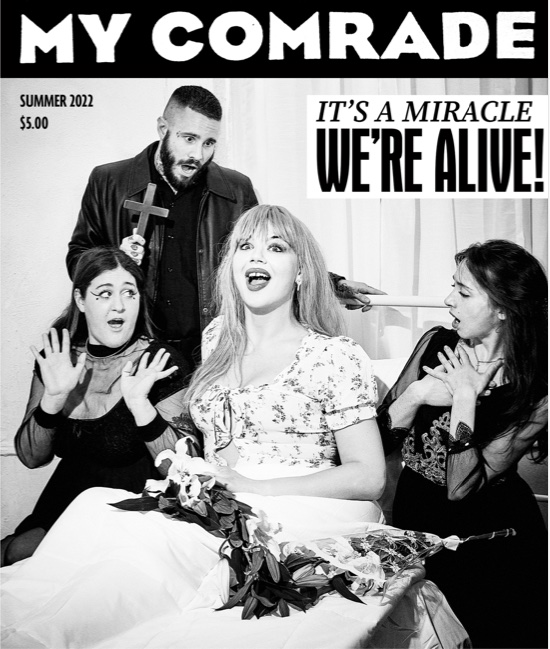
A possessed Macy Rodman is flanked by Shaun Lucas, Nika De Carlo, and Layla Keele. Photo by Steven Harwick.
Linda has accidentally become an omniscient narrator and raconteur of the downtown avant-garde. Her vantage point as an embedded insider is singular. The indispensable 2020 book The Drag Explosion compiles Linda’s photographs from the 1980s and ’90s, a window into a halcyon era.
She’s continued to be a stellar nightlife fixture and seamlessly shifted to several successive club scenes. (She threw the memorably bonkers weekly party “Slurp” with fashion designer Telfar Clemens and DJ Michael Magnan.) Sporadically she hosts bingo binges at city discotheques and New Jersey brunch venues, and narrates a killer slideshow. We caught up with her as she was installing the show and asked some questions.
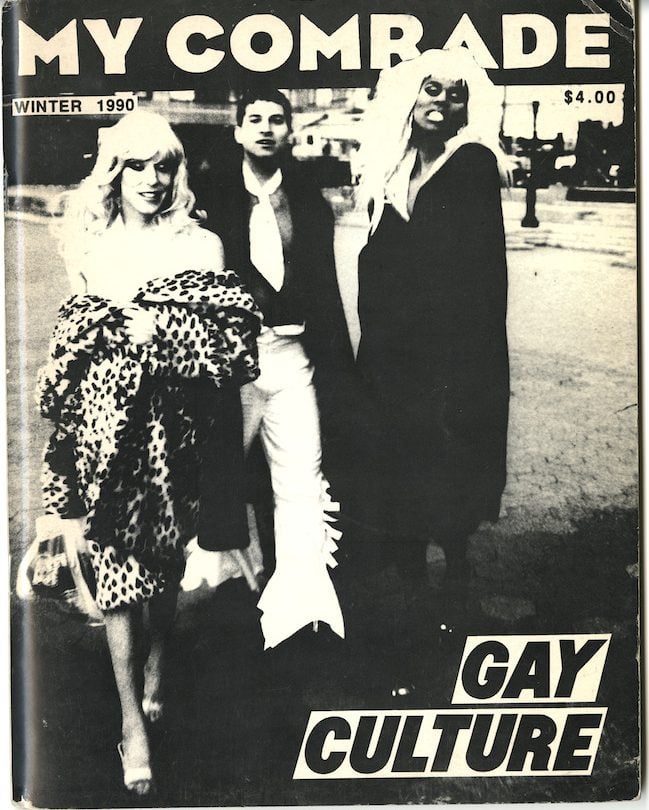
Lahoma, David Dalrymple, and RuPaul were cover stars in 1990. Courtesy of Linda Simpson.
First you did the 1980s and ’90s drag book, and now My Comrade. What’s it like to look back?
Well, of course it brings me back. It reminds me of how busy I was and how busy we all were, in some ways. Even though it was easier to just laze around and be bohemian, we all kept ourselves very active with creative stuff. The fruits of our labors are on display!
Do you have an archive?
Well, my photos are precariously kept in shoeboxes in a closet. For My Comrade, the archives no longer belong to me. I went through Boo-Hooray, which is an archival service. They sold my archives—get this—to Harvard. So, I’m in the Ivy League, which is hysterical.
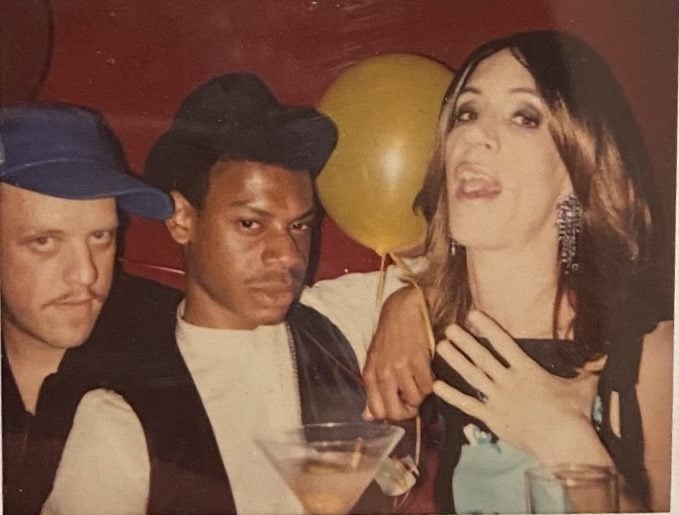
DJ (and designer of the 2022 issue of My Comrade) Michael Magnan, Telfar Clemens, and Linda at their “Slurp” party at the Cock in 2006. Courtesy of Linda Simspon.
Can you tell me about the birth of Linda? She always seemed to have a toe in reality.
My first dabble in drag were these My Comrade release parties. When I started the magazine, Linda had not been born yet. What happened is, I wanted to plug into the East Village drag scene, but I myself hadn’t started doing drag, and didn’t even know that I wanted to do it. It was gradual there—wasn’t like, you know, Ta-da! Here she is.
I wasn’t creating a character with my drag; it seemed rather organic. I came into a scene that was very lively and enthusiastic, and I learned, I think, from observing and being part of that. And then I kind of went out on my own in many ways. It was an interesting time when I entered into the drag scene because it was in transition. The Pyramid Club, which was like the kooky East Village headquarters, had been going strong throughout the ’80s. But by the time I started doing parties there on a regular basis, the scene had really faded, and the Pyramid was a little bit out of favor. So, we gave it another chapter. I started throwing parties there in 1990.
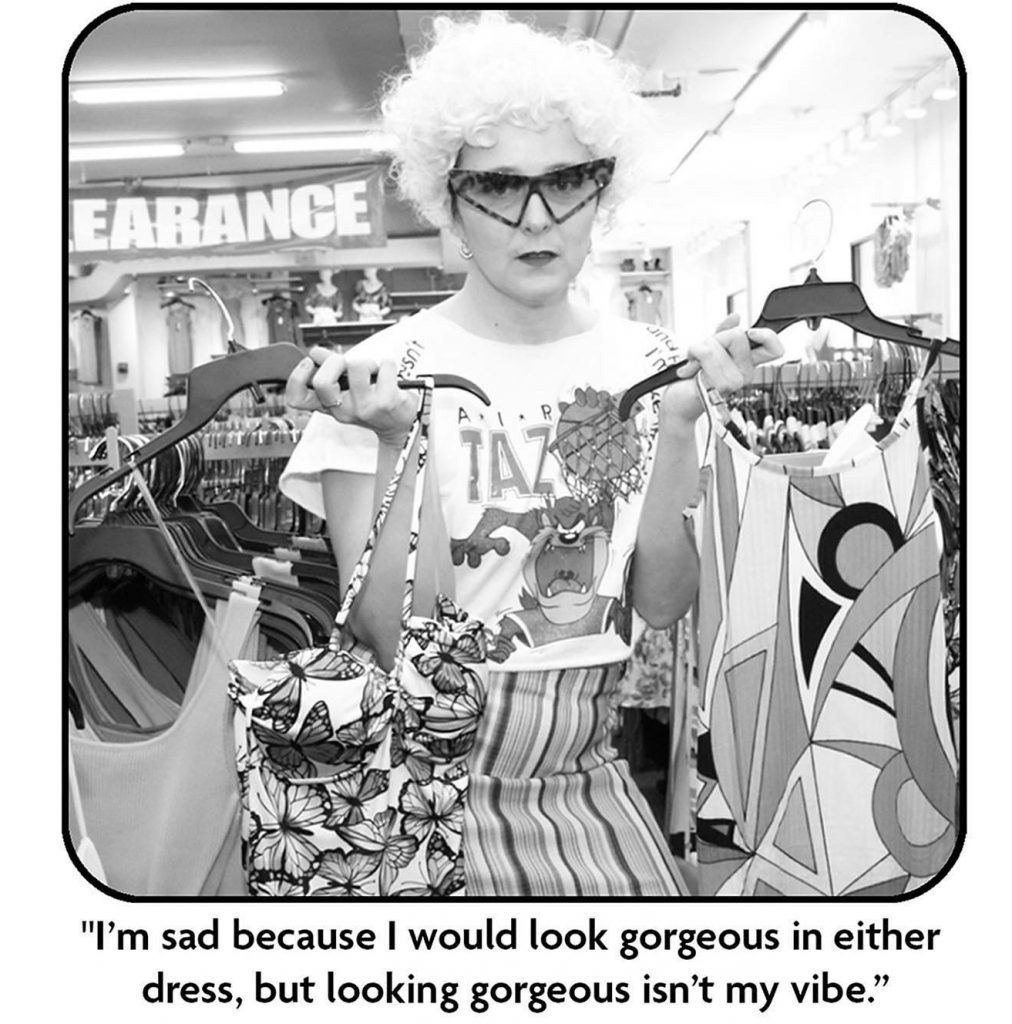
Artist K8 Hardy goes on a midtown shopping spree at Rainbow in the new issue of My Comrade.
My Comrade features people like Bruce LaBruce, Tabboo!, and RuPaul, but also so many other supremely talented people who didn’t make a mainstream crossover.
The thing is, I don’t know if they wanted to. A lot of people were content back then to do their thing. That did not have to equate to fame or success in a conventional manner. Ru and Bruce were more ambitious, honestly, and good for them and for all they’ve achieved. Everyone had their own agenda. It was a more bohemian era. New York’s always been expensive, but it wasn’t nearly as prohibitive as it is now. So people had a tendency to just, you know, do stuff.